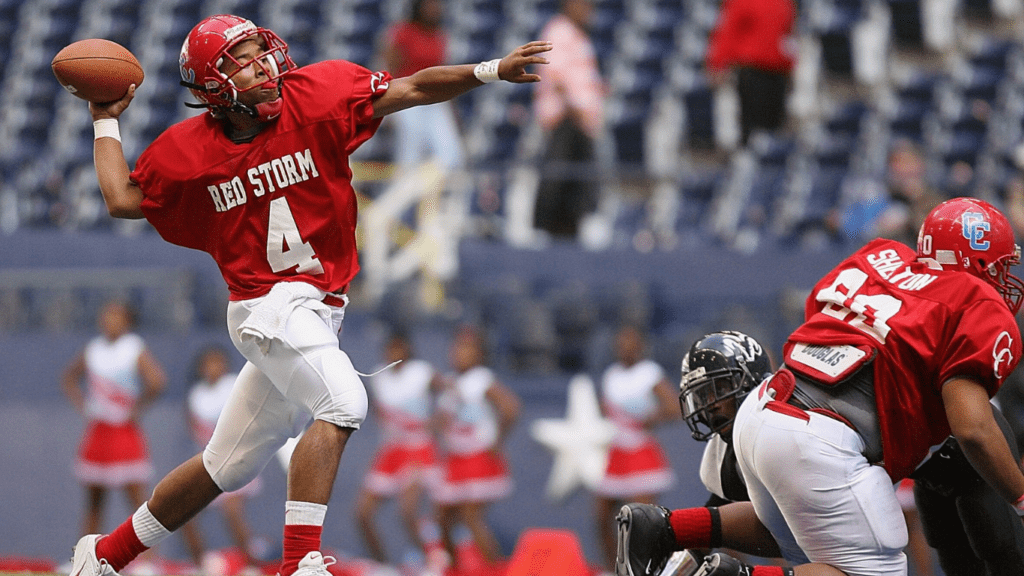As a sports enthusiast, I’ve always been fascinated by the intricate dance between technique and injury prevention, especially in high-impact sports like football. When it comes to tackling and blocking on the field, the importance of proper technique cannot be overstated. It’s not just about making a play; it’s about safeguarding the players’ well-being.
In this article, I delve into the pivotal role that mastering the correct form plays in reducing the risk of injuries during tackles and blocks. From foot positioning to body alignment, every aspect of technique contributes to creating a safer environment on the field. So, whether you’re a seasoned player looking to refine your skills or a newcomer eager to learn the ropes, understanding the nuances of proper technique is key to staying healthy and competitive in the game.
Understanding the Basics of Tackling and Blocking
When it comes to preventing injuries in sports like football, mastering the correct technique is paramount. Here, I delve into the essential aspects of safe tackling and effective blocking to enhance your performance on the field.
The Mechanics of Safe Tackling Techniques
In tackling, it’s crucial to focus on the fundamentals. I’ll outline key points to ensure you execute safe and effective tackling techniques:
- Maintain a low center of gravity: By staying low, you improve stability and are less likely to be knocked off balance during a tackle.
- Aim for the thighs or lower body: Targeting the lower body reduces the risk of head and neck injuries, promoting a safer tackling environment.
- Wrap up the opponent: Securely wrap your arms around the ball carrier to bring them down effectively while minimizing the impact on both players.
- Drive through the tackle: Emphasize driving through your opponent with your legs to generate power and control the tackle’s outcome.
- Proper hand placement: Position your hands inside the defender’s frame to maintain leverage and control throughout the block.
- Maintain a wide base: A stable and wide stance increases balance and strength, enabling you to withstand the defender’s impact.
- Follow through with drive: After initial contact, continue driving your feet and legs to sustain the block and create openings for the ball carrier.
- Stay in front of the defender: By mirroring the defender’s movements and staying in front of them, you effectively shield the ball carrier from potential tackles.
The Role of Proper Technique in Preventing Injuries
When it comes to injury prevention in football, mastering proper technique is paramount. In tackling and blocking, the right techniques can significantly reduce the risk of injuries on the field.
How Correct Technique Reduces Risk in Tackling
In tackling, using the correct technique not only enhances performance but also minimizes the chances of getting injured. By maintaining a low center of gravity and targeting the lower body during a tackle, players can reduce the impact on themselves while effectively bringing down the opponent.
The Importance of Blocking Formations for Safety
Blocking formations play a crucial role in creating a safe environment during gameplay. Proper body alignment, hand placement, and maintaining a wide base stance are essential for effective blocking. By using the right formations, players can protect themselves and their teammates from injury while maintaining offensive strength on the field.
Training and Practice Essentials
When it comes to mastering proper techniques in football to prevent injuries, training and practice play a crucial role in honing skills and minimizing risks on the field. Here, I cover essential drills focusing on enhancing tackling techniques and building muscle memory for safer blocking.
Drills to Enhance Tackling Techniques

To improve tackling skills and reduce the chances of injuries caused by improper techniques, incorporating specific drills into regular practice sessions is paramount. Here are key drills that can help players enhance their tackling abilities:
Form Tackling Drill:
- Focuses on mastering the correct form while tackling.
- Emphasizes proper body alignment, leverage, and follow-through.
Angle Tackling Drill:
- Teaches players how to approach tackles from different angles.
- Enhances agility and understanding of positioning during tackles.
Read and React Drill:
- Improves players’ reaction time and decision-making skills during tackles.
- Enhances anticipation and quick responses to offensive plays.
Wrap-Up Tackling Drill:
- Focuses on wrapping up the opponent securely after making contact.
- Emphasizes the importance of completing tackles effectively.
Live Tackling Drill:
- Simulates game-like scenarios for players to practice tackling.
- Offers a realistic experience to test techniques under pressure.
Building Muscle Memory for Safer Blocking
Creating muscle memory for safe and effective blocking techniques is essential to prevent injuries and maintain a strong defensive strategy. Here are some ways to build muscle memory for safer blocking:
Repetitive Drills:
- Engage in repetitive blocking drills to reinforce proper techniques.
- Help players instinctively react with correct blocking movements during games.
Film Study:
- Analyze game footage to identify areas for improvement in blocking.
- Enhances understanding of opponents’ strategies to counter effectively.
Offensive Line Drills:
- Participate in drills specific to offensive line blocking techniques.
- Focus on teamwork, coordination, and communication for effective blocking schemes.
Hand Placement Exercises:
- Practice proper hand placement techniques during blocking drills.
- Improve hand positioning to gain leverage and control against opponents.
Pads and Bags Drills:
- Utilize pads and blocking bags to simulate real-game scenarios.
- Enhance power, leverage, and technique in controlled practice environments.
By incorporating these drills and strategies into training sessions, players can enhance their tackling and blocking techniques, reducing the risk of injuries while improving overall performance on the football field.
Equipment and Supportive Gear
When it comes to injury prevention in high-impact sports like football, the role of equipment and supportive gear cannot be overstated. Proper protective gear plays a crucial role in minimizing the risks associated with tackles and blocks on the field. Ensuring that players have the right equipment not only enhances their performance but also significantly reduces the chances of injuries during gameplay.
The Impact of Protective Gear in Injury Prevention
I always stress the importance of protective gear in injury prevention when it comes to sports like football. Helmets, shoulder pads, knee pads, and mouthguards are essential pieces of equipment that provide vital protection to players during tackles and blocks. The impact of wearing proper protective gear goes a long way in reducing the severity of injuries and ensuring the safety of athletes on the field.
Choosing the Right Equipment for Football Safety
Selecting the right equipment is paramount for football safety. Ensuring that each player has gear that fits properly and meets safety standards is non-negotiable. From helmets that provide adequate head protection to shoulder pads that absorb impact effectively, every piece of equipment plays a crucial role in keeping players safe during gameplay. Prioritizing the quality and suitability of protective gear is key to injury prevention and maintaining a secure environment for all athletes.

 Chelsea Haynes is a valued member of the Awesome Football Network team, where she excels as a skilled contributor and article writer. With a sharp eye for detail and a deep love for football, Chelsea produces compelling content that covers a diverse range of topics, including team dynamics, player performances, and game strategies. Her insightful articles are crafted to engage and inform readers, providing them with a deeper understanding of the sport.
Chelsea's expertise and dedication to football journalism enhance the quality of content at Awesome Football Network. Her contributions help keep the platform at the forefront of football news, ensuring that fans and professionals alike stay well-informed and connected to the latest developments in the world of football.
Chelsea Haynes is a valued member of the Awesome Football Network team, where she excels as a skilled contributor and article writer. With a sharp eye for detail and a deep love for football, Chelsea produces compelling content that covers a diverse range of topics, including team dynamics, player performances, and game strategies. Her insightful articles are crafted to engage and inform readers, providing them with a deeper understanding of the sport.
Chelsea's expertise and dedication to football journalism enhance the quality of content at Awesome Football Network. Her contributions help keep the platform at the forefront of football news, ensuring that fans and professionals alike stay well-informed and connected to the latest developments in the world of football.
